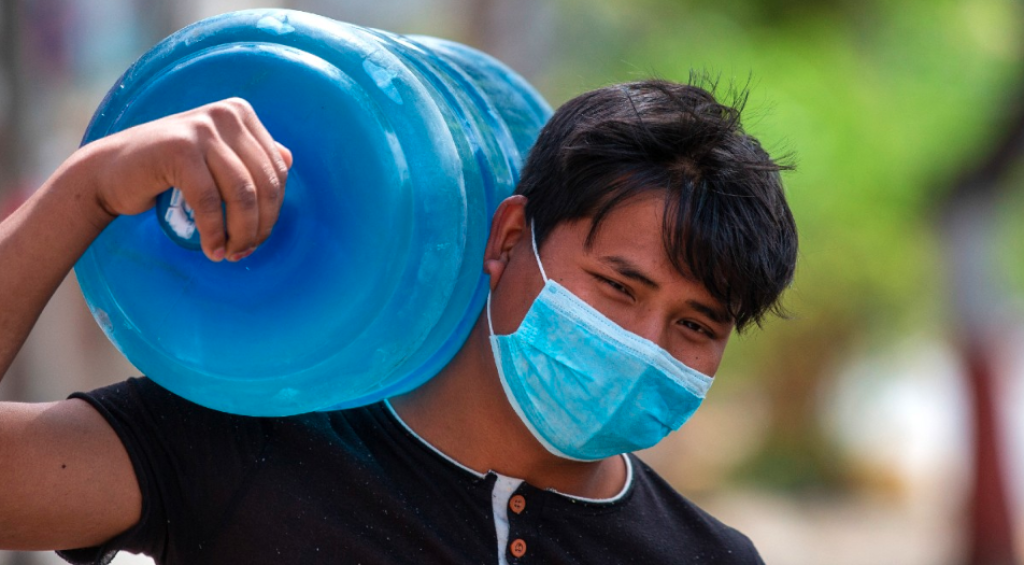Micro, small and medium-sized enterprises play a crucial role across the water and sanitation value chain. They need innovative financing solutions to help millions of people obtain clean water and decent sanitation.
An estimated 500 million people in Asia and the Pacific do not have access to a basic water supply, and 1.14 billion people lack access to sanitation. Each year, $53 billion will need to be spent in the region until 2030 to bring these people clean water and decent toilet facilities.
Governments alone cannot provide this financing. This leaves a critical role for the private sector to play within the areas of water, sanitation, and hygiene (WASH).
In Asia’s developing countries, about 91% of water financing is still provided by the public sector, against about 13% in telecoms, 52% in power and 70% in transportation, according to a study by the World Bank.
The dominance of public financing in water is largely due to the fact that water is commonly viewed as a “public good” and commercial financing to the sector is quite limited, with a focus on industrial water and wastewater treatment, large-city water supply and sanitation, estate irrigation and large reservoirs for bulk water supply and hydropower.
In contrast, most people in Asia and the Pacific still live in rural areas and on the outskirts of cities. These areas often rely on small, decentralized, and on-site water supply and sanitation systems, often provided by micro, small and medium-sized enterprises.
These enterprises often are not able to attract investors due to a lack of collateral, the informal nature of their business, higher perceived risks, and sizable transaction costs. This low investment readiness makes financial institutions reluctant to lend, as they are often seen as more demanding to appraise and have a higher perceived credit risk profile.
An estimated 500 million people in Asia and the Pacific do not have access to a basic water supply, and 1.14 billion people lack access to sanitation.
How then can we unlock private financing in the areas of water, sanitation, and hygiene? These four actions can help.
1. Giving micro, small and medium-sized enterprises access to financial market instruments is crucial to grow their customer base and improve service levels.
A recent study by Dalberg Advisors found that there are over 200,000 micro, small and medium-sized enterprises involved in water and sanitation in India. The financing needs of these entrepreneurs fall into the ‘missing middle’, ranging from $15,000 to $600,000. Together, they have an annual debt demand of $2.6 billion. Yet less than 16% of this enterprise capital demand is currently being met by formal finance providers. Equity investors have also been inactive within the water and sanitation sector in India, with less than $66 million invested over the last 10 years.
This data shows that despite the need for financing to grow their customer base and improve service levels, there is a systematic market gap between the demand and the supply of financial services. To unlock private financing, these entrepreneurs must first be given access to basic financial market instruments such as savings accounts and credit to borrow for capital investments and operations.
2. A mix of financing and technical assistance instruments is needed to address these challenges.
There are a number of financial and non-financial instruments that would be suited to unlocking financing for water and sanitation enterprises with an annual market size in India alone ranging from $6.5 billion to $10.7 billion.
For example, while lenders need support in order to overcome perceptions of risk, impact investors will benefit from reducing transaction costs and blending capital to increase comfort with these investments.
3. Lenders need the right incentives to lend to MSMEs in the sector on more favorable terms.
Incentives include access to loans with lower interest rates, deferred payments, or income-contingent repayments, as well as partial guarantee of loans in the event that a borrower defaults. For example, Agencie Francaise de Développement developed a blended finance facility in Cambodia that combined concessional lending, guarantees, grants, and technical assistance, that led to increased lending in the water and sanitation sector.
4. Strengthen the role and mandates of local financing institutions and multilateral development banks
There is also a need to increase local financing institutions’ awareness of the opportunities for lending to smaller enterprises, to encourage them to move beyond financing large-ticket infrastructure, and to apply a more flexible approach in terms of using their balance sheets more effectively in taking risk off the table for the other actors in blended finance. Multilateral development banks can play a key role in building financing institutions’ capacity in this area.
Market platforms are also needed to bring together the entire water and sanitation ecosystem in one place, leveraging data to drive investment decisions and research, and enabling financiers to explore investable opportunities in the water and sanitation sector, reducing time for identification and due diligence.
Micro, small and medium-sized enterprises play a crucial role across the water and sanitation value chain. They often provide last-mile access to low-income households living outside of formal service areas.
Innovative blended finance solutions can be leveraged to unlock capital for them across Asia to help bridge the credit demand gap and get closer to achieving the Sustainable Development Goals by helping millions of people obtain clean water and decent sanitation.
Source : Asian Development Blog



































































